News & Events More |
The Birth of the Associated GrowersThe sales disaster was evident by November of 1922, and made it clear to most growers that a new marketing arrangement was needed. The mental and financial condition of the Okanagan fruit growers at this time is illustrated by an extract of a letter from B. McDonald of the British Columbia Growers Ltd. to a broker in Winnipeg, dated January 29, 1923:
Reorganization still goes on in the Valley. Growers by the dozen are camping on all the shippers' doorsteps looking for money. It has become so strenuous that our Credit Manager has been practically obliged to take a week's leave of absence in an endeavour to recuperate. Nearly every grower in the valley is broke, even appealing to the personnel of the company for small temporary loans of $5 and $10. This is certainly a nice state of affairs. You people on the outside may think from the tone of our letters that we are arbitrary and cantankerous, but we really believe we have reason to be; if you were here in the valley and had to deal with these matters for a couple of weeks, the novelty would soon wear off and it would become a genuine task. A "Growers' Committee" had been formed in the spring of 1922 to consider marketing problems, and the impetus of financial loss accelerated the push for change. Growers' meetings during the winter of 1922-23 overwhelmingly decided that some powerful form of cooperation was needed to "save the industry". Outside experts were called in to address the growers on successful organization. These included Boyd Oliver and Dr. Theodore Macklin, professor of agricultural economics at the University of Wisconsin. But the most influential of all was the "revivalist of cooperation", Aaron Sapiro, a San Francisco lawyer "known throughout North America as one of the most brilliant and successful organizers of cooperative marketing agencies for farm products." Vignette: Aaron Sapiro, Evangelist of CooperationIn 1924, when Aaron Sapior made is speaking tour through the Okanagan, he was at the high point of a career which between 1915 and 1927 saw him and his associates found some sixty agricultural cooperative associations, despite hostile propaganda from middlemen and speculators. 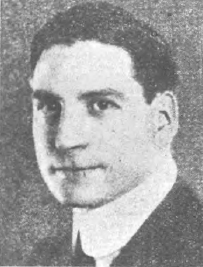
Born in San Francisco in 1884 and brought up in an orphanage, Sapiro rose from his impoverished origins to graduate as a lawyer in 1911. In 1915 he became legal counsel to the California State Market Bureau, and it was in this position that he developed his system for marketing farm products. He saw that a cooperative could only succeed if it handled enough of its commodity to control the supply to market and thus eliminate destructive price competition. To this end, he devised ironclad contracts requiring growers to sell only through the cooperative, and the cooperative had to guarantee to sell the growers' product. Sapiro promoted his "California plan" of marketing so vigorously and enthusiastically that one writer commented that he made the "marketing of a barrel of apples more exciting than a Tale from Boccaccio and the signing of a cooperative agreement seem as vital to social justice and progress as the Magna Charta." Sapiro's promotional genius soon had him in demand outside his native California; by 1922 he had been involved with at least fifty-five cooperative associations in nineteen states, and in 1923 he moved his base from California to Chicago and helped launch the wheat pool movement on the Canadian prairies.2 As the expert with the answers, he was looked to by nearly all connected with agricultural cooperation. Sapiro's visit to the Okanagan and his part in the founding of Associated Growers was just part of one of his promotional tours through the United States and Canada, in which he would impart the basis of his scheme, whip up enthusiasm, and then leave the locals to implement the plan. Those who favoured the independent side were, naturally enough, not quite so enamoured of Sapiro. At the time that he made his whirlwind way through the Valley, the Kelowna Theatrical Society was producing Gilbert and Sullivan's light opera The Pirates of Penzance. Drury Price, secretary of the Occidental Fruit Company, who played violin in the orchestra, wrote an extra satirical verse into one of the songs: When Sapiro isn't going round sapiring Or maturing his co-operative plans, You will find him, giving stokers "hints on firing" Or teaching all the rules to baseball fans. And then he'll turn around and show his mother How the gentle art of cooking should be done. Ah, taking one consideration with another He's the man who put the currants in the bun. Not long after his Okanagan tour, Sapiro't energies were deflected from cooperative promotion by a series of anti-Semitic personal attacks published in the Dearborn Independent, owned by Henry Ford, the auto magnate. The newspaper ran a series of articles claiming that Sapiro't cooperative organizations were part of a conspiracy by Jewish bankers to gain control of the food markets of the world. Sapiro launched a libel sui: against Ford and his mouthpiece, claiming a million dollars in damages. The case was eventually settled out of court in 1927. Ford paid all costs and issued a public "Retraction and apology to the whole Jewish people; retraction of the charges against cooperative marketing; retraction of the personal insinuations". Sapiro had triumphed over Ford, but his reign as cooperative promoter was over. The publicity had made him too controversial, while many of the cooperatives he had previously promoted were, like the Associated, suffering from hurried organization and the problems inherent in trying to maintain the ironclad control the Sapiro system required. Sapiro left the agricultural field to organize short-lived cooperatives in the laundry, furniture, and movie industries; finally he returned to a legal career in Los Angeles. He died in November, 1959. Sapiro's visit to British Columbia was arranged by the Vancouver farm magazine Farm and Home. Sapiro spoke in the four major Okanagan towns, and aroused a wave of enthusiasm which led to eventual organization along the lines he proposed. The newspaper report of Sapiro's speech at Vernon on January 4, 1923, which was reprinted and circulated to growers, explained his program. "We in California believe that co-operative marketing is the only hope of the man who tills the soil or cares for the orchard . . ." Co-operative marketing, he said, was now beyond the experimental stage; it was a proved success. Using the example of California, he rebuked the Okanagan growers for the failure of their sales methods: co-operative marketing means the substitution of merchandising for dumping. Here apple growIn 1922 for example they got scared because they had so many apples, rushed them to shippers, who in turn besieged jobbers with offers of Okanagan apples. . . . The Okanagan growers were themselves to blame for the disastrous prices last season; they themselves broke the market. 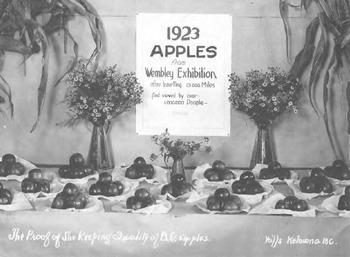
Sapiro recommended several steps towards better merchandising: quality control and standardization, attractive and convenient packaging, extension of markets in time and place and through increased use of the product, regulation of supplies on the market to prevent either gluts or shortages, and finally making the price dependent on the supply of the product at the point of consumption rather than at the point of production. Sapiro left the promise of a rosy future to his listeners. "Once the farmer learned to help himself no one could stop his progress in California, and if they learned it here no one could stoja the prosperity of the Okanagan Valley either." Sapiro's views and the advice of other experts resulted in the adoption of the "California plan" of pooling, which was regarded at the time as "the embodiment of true cooperation".This plan was more popular than other proposals for a Board of Control along the lines of the wartime Wheat Board or a central selling agency in which shippers would stay as they were but all would sell through one office. 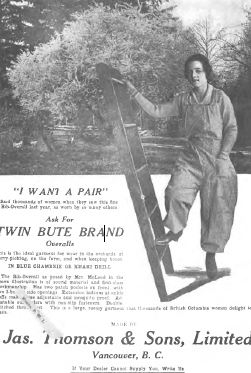
The proposed organization, to be known as "The Co-operative Growers of British Columbia, Limited" was arranged in a federative form, with a single selling office, the "Central", and with packing and shipping by separate member cooperatives, or "Locals", in each fruit growing area. Most private shippers were to be bought out and their facilities taken over by the Locals. Prominence was given to the role of a well coordinated Central in regulating quality and supply. Efficiency, and Central's control of a large portion of the crop were given priority. If a co-operative selling concern is started with control over an insufficient proportion of the tonnage, the balance of the tonnage outside the Cooperative, and therefore in competition with it, may prove too great a handicap. The Co-operative Growers of British Columbia, Ltd., have decided that the control of 80 per cent of the fruit and vegetable tonnage of the territory covered by its activities is the minimum that must be secured. which shippers would stay as they were but all would sell through one office.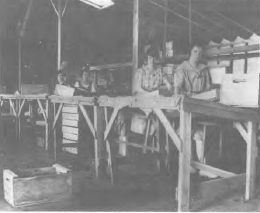
To secure this control, a campaign, costing over $30,000,7’was mounted through January and February to persuade growers to sign up. The con- Packing cherries, Greata Ranch, Peachland, 1923. Courtesy Kelowna Centennial Museum tract was a three party agreement, including grower, Local, and the Co-operative Growers, for the sale of fruit and vegetables exclusively through the Central for a period of five years. It was a conditional contract, to come into effect only if 80 per cent of the fruit tonnage in the Okanagan, Kootenay, and Mainline districts was signed up by March 30, 1923. At the same time, Okanagan United Growers, the existing cooperative selling organization, agreed to go into liquidation if the 80 per cent mark was reached. As it happened, the time required to sign up growers was considerably shorter than anticipated. By February 23, the membership campaign had the necessary quota, and eventually around 2700 growers, representing fully 85 per cent of the potential crop of 1923, were signed up. The Cooperative Growers of British Columbia was then legally incorporated on March 8. A holding company, Co-operative Growers' Packing Houses Ltd., was also formed to purchase the independent packing houses and transfer them to the Locals. 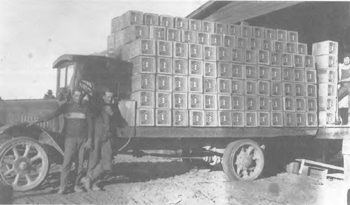
The name of the organization was unsuitable for technical reasons; the word "Co-operative" could be used only by organizations and assocations formed under the provisions of the Cooperatives Act. The growers' association was incorporated under the Companies Act. Therefore a special resolution was passed to change the name to Associated Growers of British Columbia, Limited, on May 10, and this change was legally registered on June 28. Contact Us Hours: 9am - 4pm weekdays. t: 250-762-5226 |

